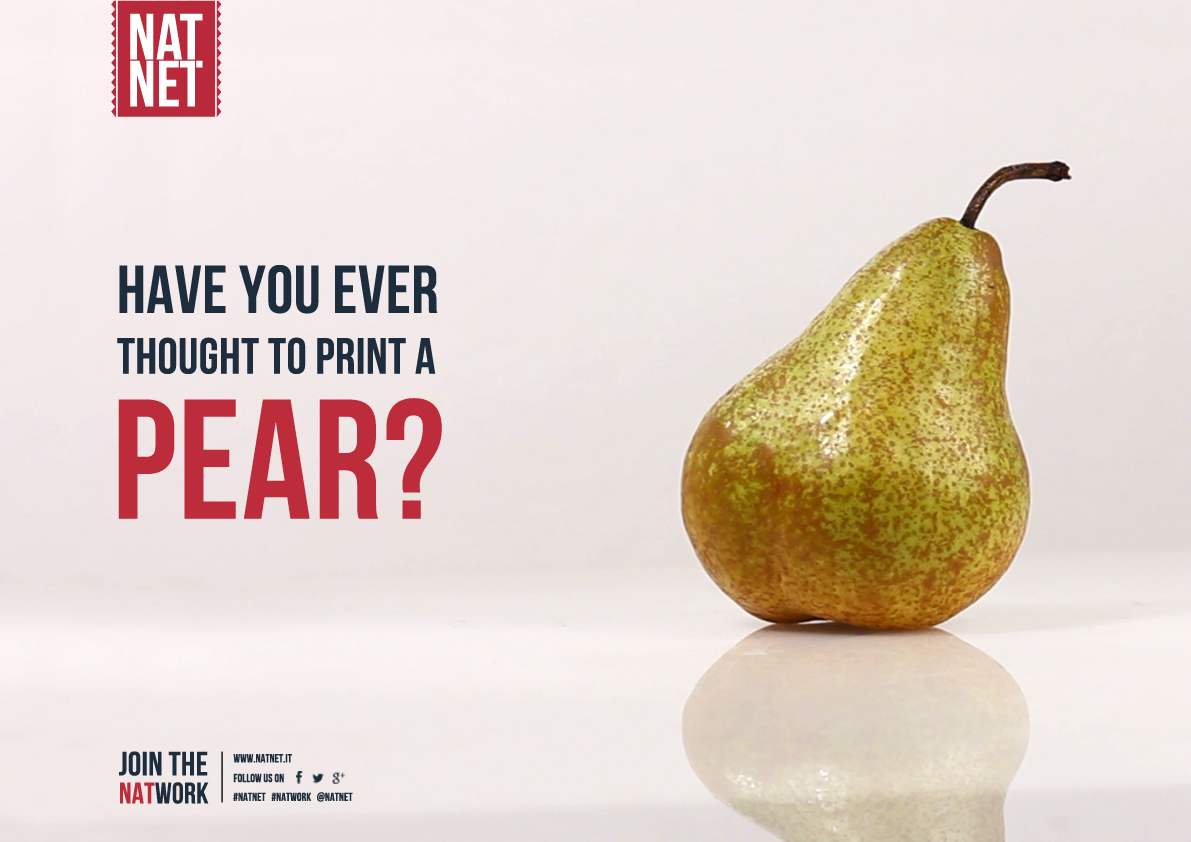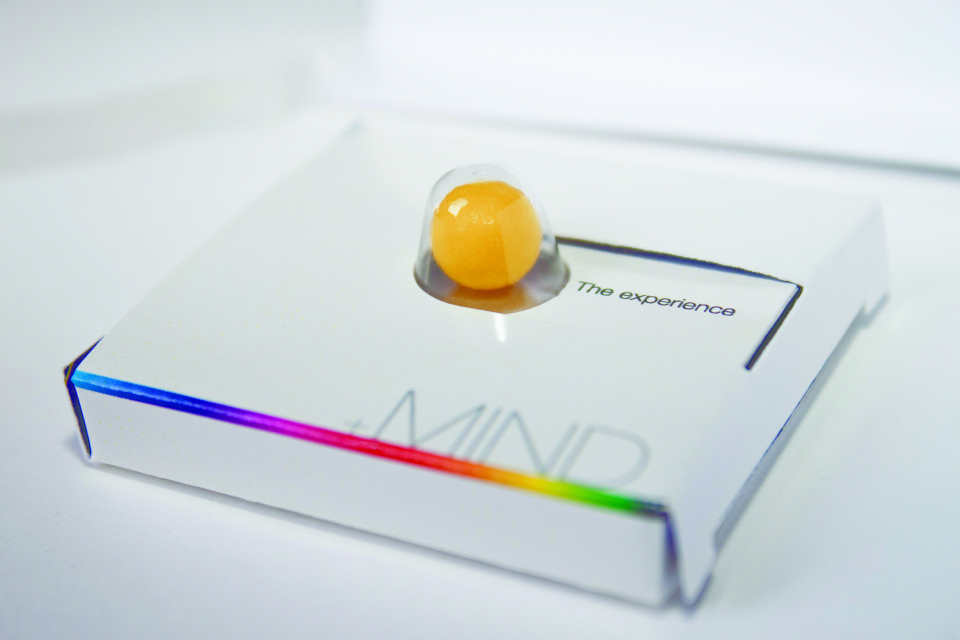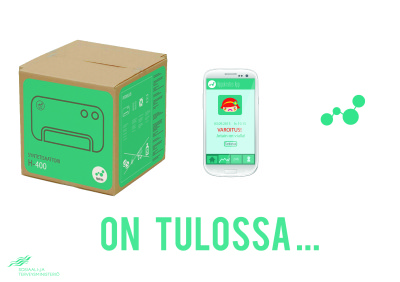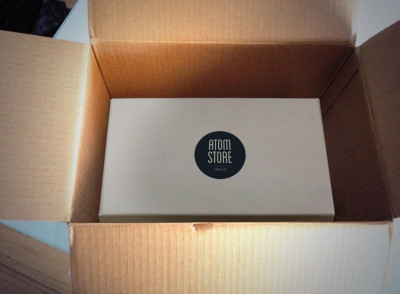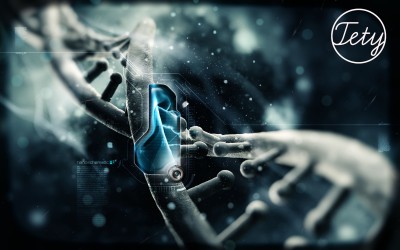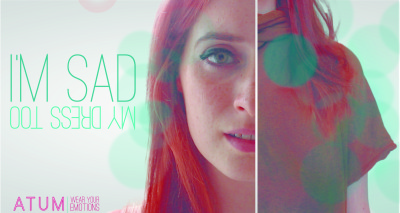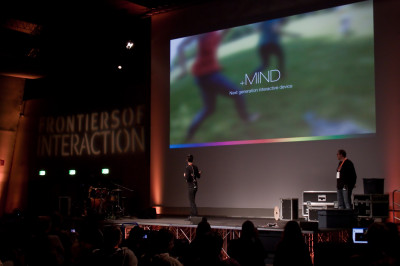What is the future?
The future does not exist. It is a performance to which we all take part in, establishing a global conversation, making decisions and embracing directions. Each time we do this, we push our perception of “what is possible” a little further beyond.
At ISIA Design Florence we have made a huge experiment in Near Future Design, and we presented it at Frontiers of Interactions 2013. Here’s what we did and how it went.
In this fairly long article we will introduce our own definition of Near Future Design, the process and methodology which we use, and the first results of this experience, showing the case studies produced by our students at ISIA Design in Florence.
Note: We’re setting up a publication that will be available if you want to know more about the project and about our idea of what is (and can be) Near Future Design. Please check back for updates if you want to know more.
Incipit
The Future does not exist.
Future is a performance that sees us all engaged through the dimensions of desire and of the imaginary.
In the interconnected contemporary era innovation is established through dialogues and conversations, observing their tensions and orientations, and by using the results of these observations to project (to design) a vision of the possible future, and to implement it.
In this scenario, the vision on the future – together with all its ethical, environmental, social, political and ecosystemic implications – is possibly the most precious product that can be offered by any organisation.
This requires a new solicitation for Design, which becomes the activator of the imaginable. And, thus, of the designable, intended as the act of “conceiving that which is still not there”.
This process includes all of society and all of its communities, which become able to establish active and shared dialogues for the creation of their own futures: they become desiring performers of their own futures.
Near Future Design
Future is an undefined lapse of time, after the present.
Future does not exist, some might say, except as a possibilistic projection of the tension of the present. Infinite futures exist, and we actuate them according to the decisions we make and the directions we embrace.
Futurology, the study of the future, is a science, art and practice which postulates possible futures. It highlights, in the process, the importance of their characterisation as multiples and plural: many possible and alternative futures, not a single, monolithic one. Thus exposing the limits of clairvoyance, of prediction and of combinatorial, probabilistic and statistical calculus, in respect of the possibility to conceive (and actuate) possible and preferable futures.
One of the main assumptions of future studies is that the future is plural, not singular. It consists of alternative futures with varying likelihood. The primary objective of future studies is to identify, map and describe alternative futures, by gathering quantitative and qualitative data and information dealing with the possibility, probability and desirability of change, according to a holistic perspective. Here, the cultural analysis of what are the “preferred” futures among the different possible ones is a fundamental part of the process.
Future is the result of a conversation.
In the era of information, of digital networks, of hyper connection and of knowledge, the comprehension of the future changes direction.
It is the era of continuous disruption, in which a constant state of radical innovation bears impacts of incredible energy on all our societies. In which game-changers across business, city governance, energy and politics, are the main actors and beneficiaries of innovation processes.
It is here, in this transitory and nomadic space of change and mutation, that we can imagine to start our conversations about the ways in which to co-create our future, in performative ways.
To do that, we must start from a level comprehension which goes well beyond the understanding of the state of the arts and technologies. We must start from the understanding of the imaginaries, of the rituals and tensions of the contemporary era, including the conflicts and the things which provoke wonder and sense of surreality.
We must understand the “sense of the possible” just as much as the “sense of the desirable”.
We can merge the comprehension of that which we can imagine as being implemented to the comprehension of that which we desire to be implemented: beyond utopia, past the dualistic dimension of true/false, in the state of floating suspension of the performance through which we will push a bit further both sensibilities (to technology and desire), to enact our own Future.
In this sense (conversational, communicational, polyphonic, emergent, co-authorial) the definition of the Future changes: it becomes design, projection, performance. A performance of knowledge, of ethical and civic auto-determination, actuated through auto-observation and auto-representation, in a whole that is ecosystemic and liquid, and in which dissonance and noise become forms of life, essences through which it is possible to learn thanks to the simultaneous presence of the multiple points of view which are expressed. Here, in this space whose boundaries are fractal and oscillatory, difference rises to become a value of primary importance: it is the source of life itself. (Bio)diversity as a space for opportunity and possibility.
In the creation of this space for possibility, the role of the “impossible” is obviously redefined, and becomes a tool for the polyphonic conversation just as the “possible”, with the same dignity.
Both become tools to push a bit further our perception of the “possible” – along axes which are cartesian, diagonal, non-euclidean, chaotic and indeterministic at the same time – to trigger the performance of the Future.
This is what we have defined as Near Future Design.
A performative dimension in which the observation of the state of the arts and technologies meets anthropological and ethnographical observation.
In which the diasporic and ubiquitous dimensions of our hyper connected reality transform into exceptional instruments for the comprehension of the multiple points of view which are present in the human ecosystem of relations and interactions (and, thus, of communication).
In which multiple sources of knowledge combine traversing disciplines and modalities, disseminated across cities and the spaces of communication and information.
In which we can observe the perception of the “possible” and of the “desirable” to understand: tensions, conflicts, harmonies, dissonances; rituals as they form; tendencies when they are only suggestions; identities when they are only atoms in search of their chemical bond; dis-identities, before they come apart, to then reassemble multiple times into Otherness.
In this scenario, design plays a fundamental role. One of which organisations across business, industry, politics and society are rapidly learning to understand the value.
It is a transformed design, and a design of transformation. In-between product design, communication design, strategic design and design anthropology. Interweaved with Ethnography and Human Geography.
It is Near Future Design, and it is enacted through the practices of Design Fiction.
Process
We have formalised a process to perform Near Future Design.
Here are its steps:
- Define topic areas of interest
- during each cycle/project we define the topics of areas of interest which form our research domain;
- these can be contiguous, complementary or contextual, providing continuity, but also the possibility to expand the observation to the indirect aspects of transformation to human societies brought on by our object of research;
- the output of this stage is a visual representation of the research domain, along with its extended documentation;
- The Future World Map
- the map aims to collect information about what is perceived as “possible”, “impossible”, “desired”, “feasible”, “preferred” and “envisioned”;
- it has two main areas, regarding the state of the arts and technologies, and the anthropological, ethnographic, psychological and emotional analysis of relevant cultures, communities, groups, organisations and individuals;
- the part of the map that takes into account the state of the arts and technologies mainly deals with technical issues concerning the advancement of technologies, the data and information about the relevant contexts, the description of trends and tendencies;
- the part of the map that takes into account the anthropological, ethnographic, psychological and emotional analysis deals with the collection of evidence about the ways that human societies shape themselves in the referenced contexts, describing approaches, strategies, tactics, rituals, relationships, networks, emotional expressions, gestures, economies, dynamics, ecosystems and their balances, both in their current state and in their transformation;
- in all sections, information is provided for the background information, the socio-technical settings, the possible actors and stakeholders, and providing an expanded context for the stories that are about to be told;
- the output of this stage is a visual map, a report and an extensive knowledge base, which can assume different forms, depending on the context and circumstances;
- The Story Setup
- it is the incipit of the story;
- it describes in general terms the future scenarios which we aim to describe, at the same time limiting the scope to explicitly exclude certain areas which will not be examined, and opening up to the domains which will be part of the research;
- its output is under the form of a narrative, expressed in visual and textual terms;
- The Concept(s)
- each possible future examined is described with conceptual (often abstract or diagrammatic sketches) as well as with a draft narrative which highlights its main modalities and which sets up the development of the actual storytelling;
- The Story Functions
- each story is designed according to a formalised schema (usually the three-acts of Setup, Conflict and Resolution), to provide consistent, solid narratives;
- for each story, the basic story functions are created, highlighting the kernel of each narrative, which describe in growing detail the “stories of the chosen future”;
- multiple stories can be created for each concept, even following different paths among the identified possibilities;
- the output of this stage consists of the list of kernel events for each story, as well as a diagrammatic representation of their relations and of the relations running among the different (and alternative) storylines that are being developed;
- The Event Maps
- each story is expanded into an Event Map;
- each Event Map is a diagram in which the main parts of the stories are grouped into circles, starting from the kernel functions (the main phases of each story) as well as some additional events which might be added to balance the story logic;
- satellite events, alternative paths and time-based items are added to the Map to create context, and to enhance the world-building characteristics of this stage;
- each story described in this way constitutes a world, giving a full sense of context and of credibility;
- the output of this stage is constituted by the Event Maps diagrams and by their documentation sets;
- The Story Maps
- the Event Maps are transformed into sketches;
- the representation in sketch form increases granularity and makes them more concrete;
- this phase allows for some iteration with the previous ones, as its concreteness gives immediate evidence about the balance of the stories and about the necessity to re-factor them at one of the previous stages;
- the output of this stage is constituted by the sketches and by their documentation;
- The Design Fictions
- Simulacra
- the objective of this phase is to create a simulacrum, a credible, possibly functional, “prototype from the near future” (a pre-totype), through product design and communication design, working across different media;
- the objective is “world building”, creating not only “the object” (or service, or idea, or …) but also to create the world around it, for its credibility;
- we answer the questions “What would be the world like, if there was object X? What would be in it? How would people behave?”, and we try to implement as much as we can about the answer using different media;
- the final result should create a state of “suspended (dis)belief” in which it is impossible (or at least somewhat difficult) to decide if the “object” is real or fake, as there are multiple clues and evidences that point to its existence;
- the simulacrum (and its state of suspended dis-belief) is the tool which we use to “shift the perception of the possible”, and to start the global dialogue around the possibility of the transformation of human societies, thus triggering the performative dimension of Near Future Design;
- Transmedia Narratives
- the output of the Design Fiction phase, thus, is constituted by a set of Transmedia Narratives implementing the simulacrum for the story;
- the Transmedia Narrative is a multi-modal storytelling technique which is able to move and combine the effects of multiple media, from physical objects, to websites, urban interventions and more.
- Simulacra
Note: the process is derived from the work of Storienteering, from which we have captured and modified the approach to story building, and onto which we have integrated our own version of Design Fictions, Transmedia Narratives, the idea and important role of the Simulacra, and, in the setup phases, the anthropological/ethnographical approach in the definition of the Future World Map, which becomes a Near Future World Map.
The Near Future Design concepts produced at ISIA Florence, and presented at Frontiers of Interactions 2013
HERE IS THE PRESS RELEASE (ITALIAN)
Flickr of the Near Future Lab at ISIA Design Florence
+Mind
by Francesca Cangioli, Tommaso Cappelletti, Clohé Chat
What happens when you can take a pill that transforms you and your body into the next-generation smartphone?
http://www.insidethexperience.net
http://www.youtube.com/channel/UCRY2C_8pqoJuWTOD5yWOgGQ
http://www.youtube.com/watch?v=bNdSYd3o4n4
https://www.facebook.com/pages/Plus-Mind/300274656781280?ref=hl
https://www.twitter.com/mindexperience
Hippokrates
by Francesca D’Angelo, Elisa Ledda, Veronica Mencacci, Elena Rota
What happens when Finland’s government introduces a nanotech device which you use to monitor your health and a nano-printer which you can use to print out the molecules of your medicines, thus lowering national health’s expenditures by 70%?
https://www.facebook.com/pages/Hippokrates/141324819402624
https://twitter.com/Hippokrates2
https://plus.google.com/111326982236216588810/posts
Nat.Net
by Alessio Belli, Shanshan Liu, Francesco Peri, Stefano Ravelli, Tommaso Tregnaghi
What happens when you can print out a pear, your food, or just about anything using a nanotech 3D printer? What happens when this possibility gives rise to a global, shared, peer-to-peer movement?
https://www.facebook.com/wearenat
Efesto-VibeGel
by Thomas Aito, Stefano Grazioli, Sebastiano Lucenti, Michele Talozzi
What happens when a nanotech vibrating gel is introduced in the market, revolutionizing the world of pleasure? What happens when this is the product of an OpenScience approach?
http://curavibe.altervista.org/
https://www.facebook.com/tety.taty.3?fref=ts
https://twitter.com/TetyCorporate
http://www.youtube.com/channel/UCMEWZ0BqP1m1ysVhljjaGVA
http://www.youtube.com/watch?v=JqNPnm_TgSA
http://www.youtube.com/watch?v=isO5cVOQuDk
Tety artistic director and designer Ernest Guevchenko
Lenina Somav on a public Forum
Some fake Scientific Publications
Atum
by Bianca De Magistris, Martina De Natale, Linda Gimignani, Stefano Macaione
What happens when you can wear a nanotech dress which reacts to your emotions? What if the info is published on a social network and shared online?
https://www.facebook.com/pages/Atum/1379895218892930?fref=ts
The list of articles appeared on CheFuturo! about the near future designs:
More Info:
The presentation of all the simulacra at Frontiers of Interactions 2013
The workshop on Near Future Design at Frontiers of Interactions 2013
David Gray meets Near Future Design
Leandro Agro receives some nanotech gifts
Special Thanks
Riccardo Luna and everyone at Che Futuro!, with special care for Alessia Anniballo
Leandro Agrò, Matteo Penzo, Piero Tagliapietra, Marcello Merlo, Serena Montanari and everyone at Frontiers of Interaction for hosting us and taking care of us in such an incredible event
Stefano Maria Bettega, Andrea Spatari, Silvia Masetti, Riccardo Basile, and all of ISIA Design Florence, for being an open, advanced and living place for experimentation and critique, bringing new life to Design
Bruce Sterling, Simone Cicero, Annaluisa Franco, Thingiverse, Matteo Farinella, FactoryBay.ru, 3D Printing Industry, 3DPrinfBoard.com, and all of the other knowing and unknowing accomplices of this operation
Note: We’re setting up a publication that will be available if you want to know more about the project and about our idea of what is (and can be) Near Future Design. Please check back for updates if you want to know more.
![[ AOS ] Art is Open Source](https://www.artisopensource.net/network/artisopensource/wp-content/uploads/2020/03/AOSLogo-01.png)
